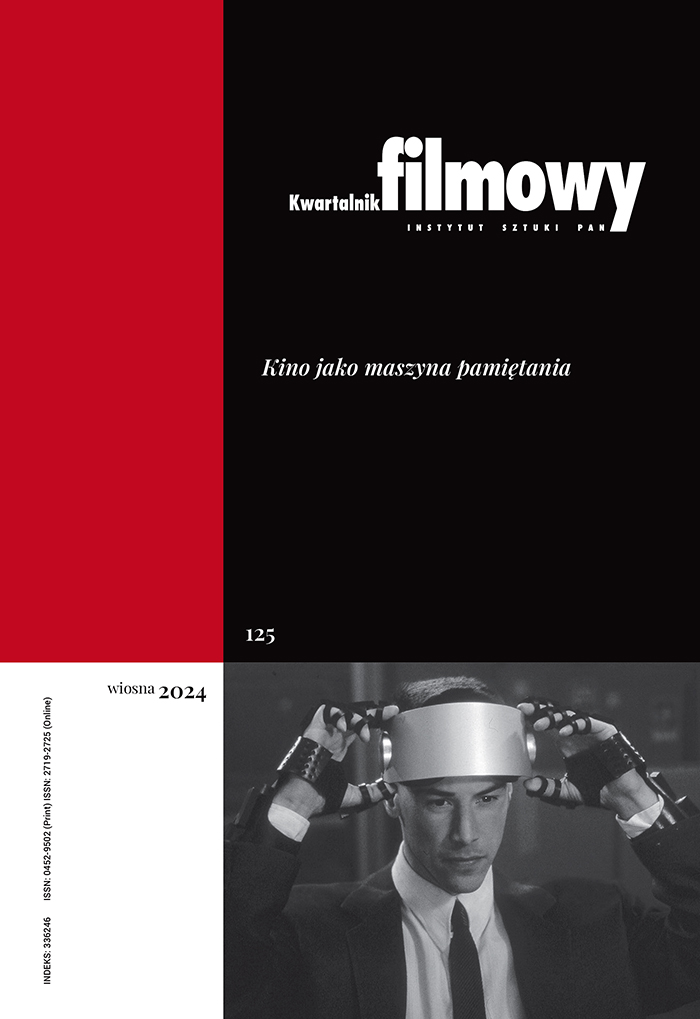New Look at One’s Own History: Von Donnersmarck’s “The Lives of Others” in Light of Socio-Historical Considerations
Abstract
The Lives of Others is an account-settling film, which is a very popular trend in contemporary German cinema. Looking at the history of the German Democratic Republic from the perspective of the regime-suppressed individual who has a guilty conscience is one of the distinctive features of alike German productions. Von Donnersmarck chooses not to use comedy convention and by examining the tragedy of the film story he discovers the historical facts most Europeans have not been aware of. He tells the story of Stasi agents who came to carry out operations aimed at sabotaging the structures of a totalitarian state. The director also draws on the plots German cinema has not exploited yet, like the rise and fall of the Berlin wall: he shows an argument the artists had with communist authorities; he asks questions about the limits of conformism and touches upon the issue of suicide. Fiuk examines the narrative structure of the film, the manner in which the characters and their relations are built and at the same time tries to sketch out a wider historical and social context for their actions.
Keywords:
Florian Henckel von Donnersmarck, German cinema, StasiReferences
Nie dotyczy / Not applicable
Google Scholar
Authors
Ewa Fiukkwartalnik.filmowy@ispan.pl
Jagiellonian University Poland
Absolwentka studiów z zakresu nauczania jezyka niemieckiego oraz kulturoznawstwa na UJ. Publikuje m. in. w „Kulturze Popularnej” i „Kinie”.
Statistics
Abstract views: 257PDF downloads: 51
License
Copyright (c) 2007 Ewa Fiuk

This work is licensed under a Creative Commons Attribution 4.0 International License.
The author grants the publisher a royalty-free non-exclusive licence (CC BY 4.0) to use the article in Kwartalnik Filmowy, retains full copyright, and agrees to identify the work as first having been published in Kwartalnik Filmowy should it be published or used again (download licence agreement). The journal is published under the CC BY 4.0 licence. By submitting an article, the author agrees to make it available under this licence.
In issues from 105-106 (2019) to 119 (2022) all articles were published under the CC BY-NC-ND 4.0 licence. During this period the authors granted a royalty-free non-exclusive licence (CC BY-ND 4.0) to use their article in „Kwartalnik Filmowy”, retained full copyright, and agreed to identify the work as first having been published in our journal should it be published or used again.
Most read articles by the same author(s)
- Ewa Fiuk, Transgression and Discrimination: Artificial Women in Science-Fiction Cinema , Kwartalnik Filmowy: No. 110 (2020): Beyond Human Being
- Ewa Fiuk, Spaces of Migration. The Case of German Cinema , Kwartalnik Filmowy: No. 107 (2019): Journey, (E)migration, Pilgrimage
- Ewa Fiuk, A Shot from the Inside of Things: The Case of “Purple Sea” by Amel Alzakout and Khaled Abdulwahed , Kwartalnik Filmowy: No. 118 (2022): One Take
- Ewa Fiuk, The Ennobling Cinema of the Peripheries , Kwartalnik Filmowy: No. 112 (2020): Polish Documentary, Polish Animation
- Ewa Fiuk, Presumed Innocence , Kwartalnik Filmowy: No. 105-106 (2019): Cinema and Political Transformation
- Ewa Fiuk, A Guinean on Alexanderplatz, or the Possibility of Contesting the Dominant Narrative , Kwartalnik Filmowy: No. 114 (2021): Contamination, Dirt, Flaw
- Ewa Fiuk, Four Film Histories with the City in the Background. On the Berlin Face of Transformation in German Cinema , Kwartalnik Filmowy: No. 105-106 (2019): Cinema and Political Transformation
- Ewa Fiuk, Melange of History, Politics and Lyricism - A Contribution to the Analysis of Alexander Kluge’s “Patriot” , Kwartalnik Filmowy: No. 104 (2018): Essay, Found Footage, Compilation Film
- Ewa Fiuk, “Berlin School” – Postulate of the Film as an Art, or “The Longing for Saving the Story” , Kwartalnik Filmowy: No. 101-102 (2018): European Cinema of 21st Century
- Ewa Fiuk, Table of Contents , Kwartalnik Filmowy: No. 125 (2024): Cinema as a Memory Machine











